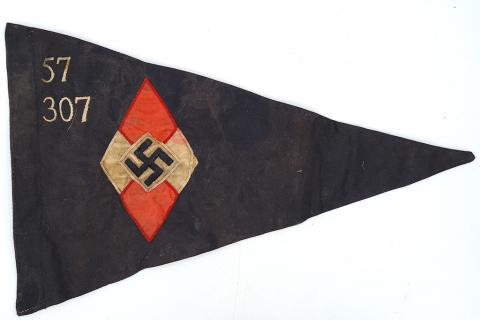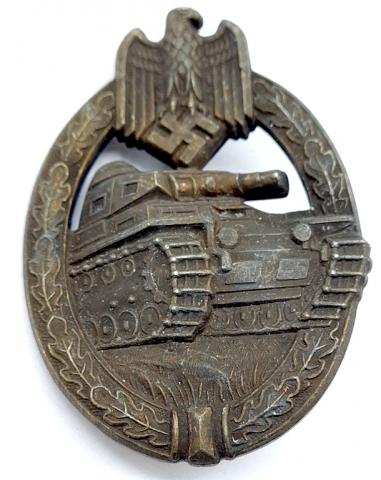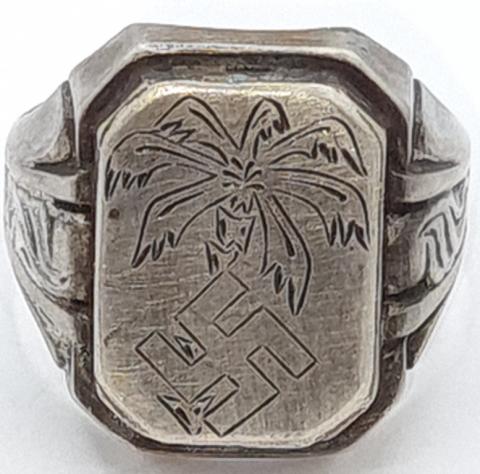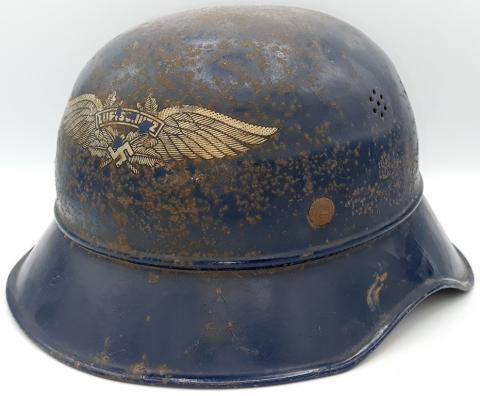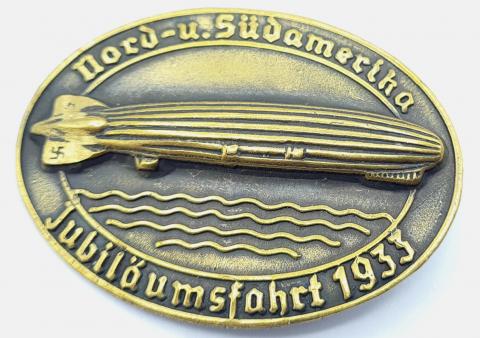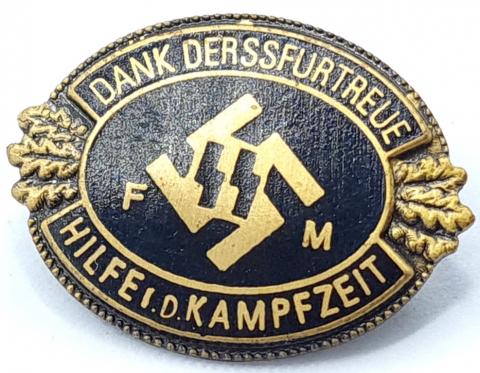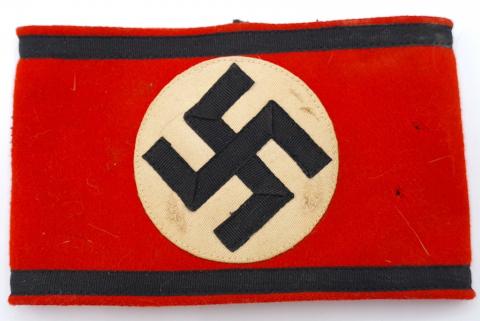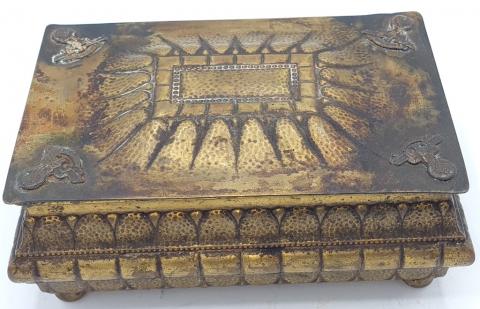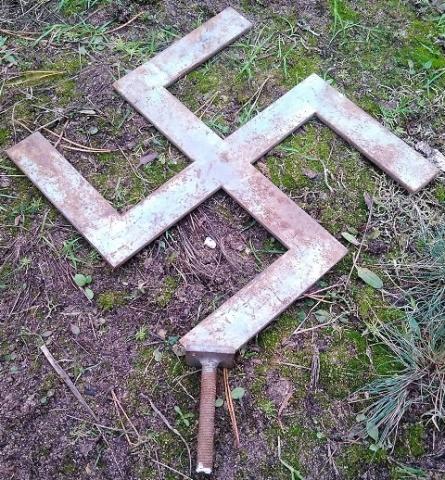Panzer Assault Badge in bronze medal award waffen ss - wehrmacht by AS
Panzer Assault Badge in bronze medal award waffen ss - wehrmacht by AS
Product
Panzer Assault Badge in bronze medal award waffen ss - wehrmacht by AS
AFRIKA KORPS CAMPAIGN SILVER RING MARKED WITH THE OWNER'S ID + SWASTIKA WEHRMACHT WAFFEN SS
AFRIKA KORPS CAMPAIGN SILVER RING MARKED WITH THE OWNER'S ID + SWASTIKA WEHRMACHT WAFFEN SS
Product
AFRIKA KORPS CAMPAIGN SILVER RING MARKED WITH THE OWNER'S ID + SWASTIKA WEHRMACHT WAFFEN SS
NICE AND UNIQUE HIGH QUALITY SILVER RING MARKS ON THE INSIDE WITH THE ID OF THE PREVIOUS OWNER - SOLDIER...
The North African campaign of the Second World War took place in North Africa from 10 June 1940 to 13 May 1943. It included campaigns fought in the Libyan and Egyptian deserts (Western Desert Campaign, also known as the Desert War) and in Morocco and Algeria (Operation Torch), as well as Tunisia (Tunisia Campaign).
The campaign was fought between the Allies, many of whom had colonial interests in Africa dating from the late 19th century, and the Axis Powers.[12][13] The Allied war effort was dominated by the British Commonwealth and exiles from German-occupied Europe. The United States officially entered the war in December 1941 and began direct military assistance in North Africa on 11 May 1942. Canada provided a small contingent of 201 commissioned officers and 147 non-commissioned officers.
Fighting in North Africa started with the Italian declaration of war on 10 June 1940. On 14 June, the British Army's 11th Hussars (assisted by elements of the 1st Royal Tank Regiment, 1st RTR) crossed the border from Egypt into Libya and captured the Italian Fort Capuzzo. This was followed by an Italian counter-offensive into Egypt and the capture of Sidi Barrani in September and its recapture by the British in December following a British Commonwealth counteroffensive, Operation Compass. During Operation Compass, the Italian 10th Army was destroyed and the German Afrika Korps—commanded by Erwin Rommel, who later became known as "The Desert Fox"—was dispatched to North Africa in February 1941 during Operation Sonnenblume to reinforce Italian forces in order to prevent a complete Axis defeat.
A fluctuating series of battles for control of Libya and regions of Egypt followed, reaching a climax in the Second Battle of El Alamein in October 1942 when British Commonwealth forces under the command of Lieutenant-General Bernard Montgomery inflicted a decisive defeat on Rommel's Afrika Korps and forced its remnants into Tunisia. After the Anglo-American landings (Operation Torch) in North-West Africa in November 1942, and subsequent battles against Vichy France forces (who then changed sides), the Allies encircled several hundred thousand German and Italian personnel in northern Tunisia and finally forced their surrender in May 1943.
Operation Torch in November 1942 was a compromise operation that met the British objective of securing victory in North Africa while allowing American armed forces the opportunity to engage in the fight against Nazi Germany on a limited scale. In addition, as Joseph Stalin, the leader of the Soviet Union, had long been pleading for a second front to be opened to engage the Wehrmacht and relieve pressure on the Red Army, it provided some degree of relief for the Red Army on the Eastern Front by diverting Axis forces to the North African theatre. Over half the German Ju 52 transport planes that were needed to supply the encircled Axis forces at Stalingrad were tied up supplying Axis forces in North Africa.
Information gleaned via British Ultra code-breaking intelligence proved critical to Allied success in North Africa. Victory for the Allies in this campaign immediately led to the Italian Campaign, which culminated in the downfall of the fascist government in Italy and the elimination of Germany's main European ally.
WW2 GERMAN NAZI LUFTSCHUTZ GLADIATOR HELMET RLB LUFTWAFFE
WW2 GERMAN NAZI LUFTSCHUTZ GLADIATOR HELMET RLB LUFTWAFFE
Product
WW2 GERMAN NAZI LUFTSCHUTZ GLADIATOR HELMET RLB LUFTWAFFE
This is a fantastic example of an original WWII Luftschutz gladiator helmet.
These helmets were worn by air raid wardens and by teams tasked with extinguishing fires and rescuing survivors after air raids.
The exterior of the helmet retains about 80 percent of the original smooth, semi-gloss finish dark blue paint.
The “Luftschutz” winged swastika decal on the front is well preserved and 80 percent intact, with minor age toning.
The interior of this Luftschutz gladiator helmet is also in EXC+ellent condition.
The three pad, civil type liner shows only minor wear. The original, integral black leather friction buckle type chin strap is complete and intact. The outer rim of the helmet shows typical edge wear to the paint.
The rear inner skirt is stamped RL2-38/28 indicating manufacture by Paul Diener, in Dresden.
These helmets in this condition are getting much harder to find. This is a nice shelf example of the Luftschutz gladiator helmet.
Historical Description: German political and civil authorities began preparing for Allied air raids even before WWII started. The Reichs-Luftschutz-Bund (RLB), under the auspices of the German Luftwaffe, was the primary organization responsible for air raid protection and readiness. Shelters were constructed all over the German Reich, and civilians were issued gas masks. Members of the RLB wore many different kinds of uniforms and equipment, from fine regalia used in parades to work coveralls and protective equipment and gear for firefighting. After the outbreak of the war, the role of the Luftschutz was expanded, and other organizations were brought under the Luftschutz umbrella, including the Luftschutz-Warndienst, Luftschutzpolizei, and the Sicherheits- und Hilfsdienst. The men and women of the Luftschutz were tasked with extinguishing fires caused by incendiary bombs, often with nothing more than buckets of sand or water with hand pups. They maintained order in air raid bunkers and provided first aid to those injured in the bombings. In the day and night raids on the bombed-out cities, and even during the horrific firestorms that took the lives of thousands, the Luftschutz were on duty.THIS ITEM WILL BE SHIPPED FROM EUROPE (OUR SECONDARY STORAGE LOCATION).
WEHRMACHT SET OF 6 VODKA CUPS IN A TREE WOODEN HOLDER
WEHRMACHT SET OF 6 VODKA CUPS IN A TREE WOODEN HOLDER
Product
WEHRMACHT SET OF 6 VODKA CUPS IN A TREE WOODEN HOLDER
HEER ARMY THIRD REICH EAGLE ENGRAVED TWICE ON EACH OF THE 6 CUPS
AMAZING PIECE !!
Rare early Third Reich Germany Zeppelin commemorative pin 1933 with swastika
Rare early Third Reich Germany Zeppelin commemorative pin 1933 with swastika
Product
Rare early Third Reich Germany Zeppelin commemorative pin 1933 with swastika
Rare Waffen SS membership supporter pin badge by RZM enamel, numbered
Rare Waffen SS membership supporter pin badge by RZM enamel, numbered
Product
Rare Waffen SS membership supporter pin badge by RZM enamel, numbered
nice enamel SS pin given to those who contributed to the Waffen SS financely.
swastika and SS runes ss-fm
on back, RZM maker logo and the number of the member...
rare to find !
Allegemeine SS - Waffen SS swastika tunic armband with cloth RZM tag (rare) cotton variation
Allegemeine SS - Waffen SS swastika tunic armband with cloth RZM tag (rare) cotton variation
Product
Allegemeine SS - Waffen SS swastika tunic armband with cloth RZM tag (rare) cotton variation
RARE to find with the RZM cloth tag in it!
nice tunic removed armband from the ALLGEMEINE SS uniform!
early cottomn variation
2 small mits holes
WW2 GERMAN NAZI UNIQUE NSKK N.S.K.K MOTORCYCLE CLUB WOODEN JEWELRY BOX
WW2 GERMAN NAZI UNIQUE NSKK N.S.K.K MOTORCYCLE CLUB WOODEN JEWELRY BOX
Product
WW2 GERMAN NAZI UNIQUE NSKK N.S.K.K MOTORCYCLE CLUB WOODEN JEWELRY BOX
SEE THE NSKK PINS ON TOP OF EACH CORNERS OF THE BOX
AMAZING PIECE !
WW2 GERMAN NAZI POLE TOP OF FLAG METAL SWASTIKA ORNAMENT
WW2 GERMAN NAZI POLE TOP OF FLAG METAL SWASTIKA ORNAMENT
Product
WW2 GERMAN NAZI POLE TOP OF FLAG METAL SWASTIKA ORNAMENT
